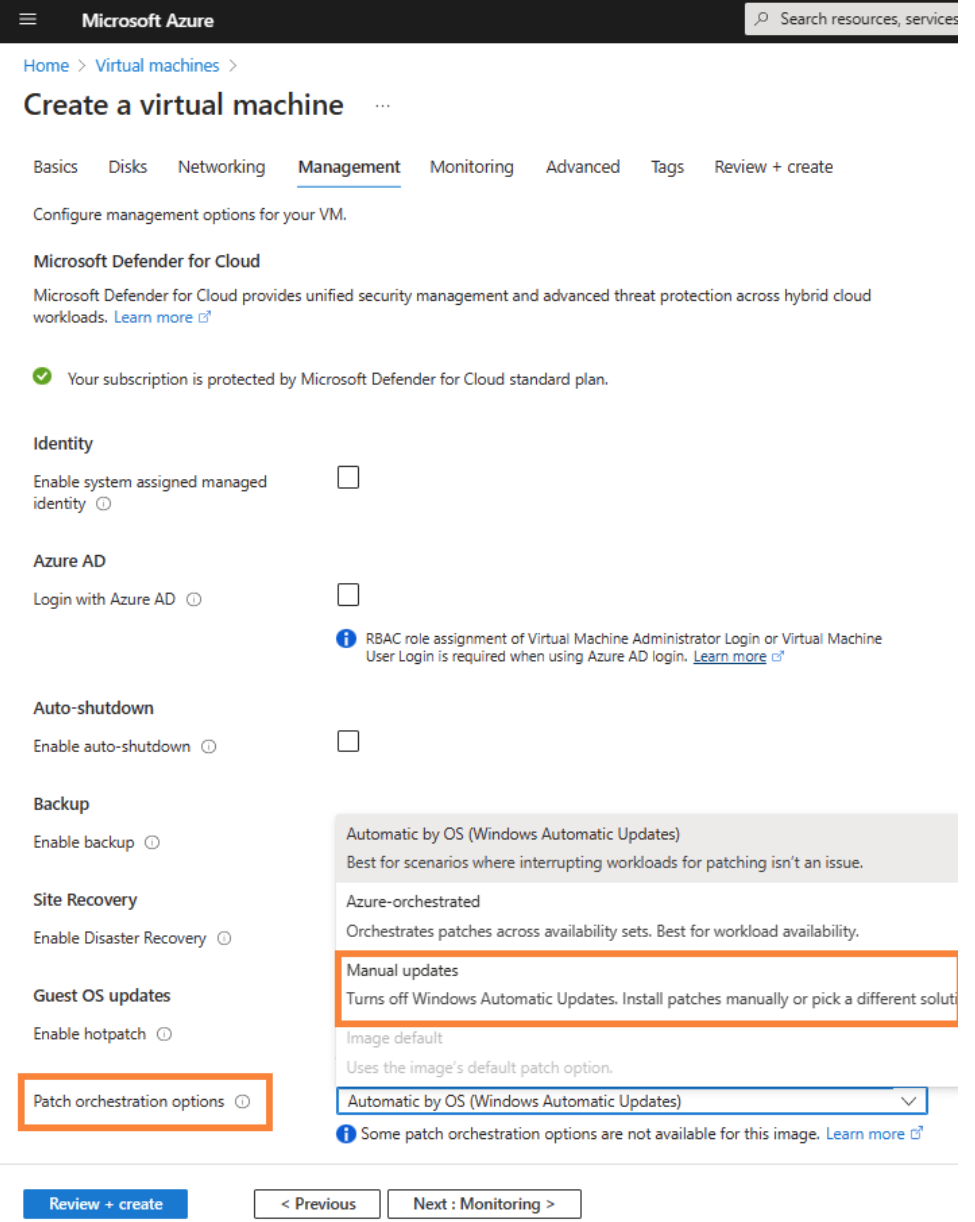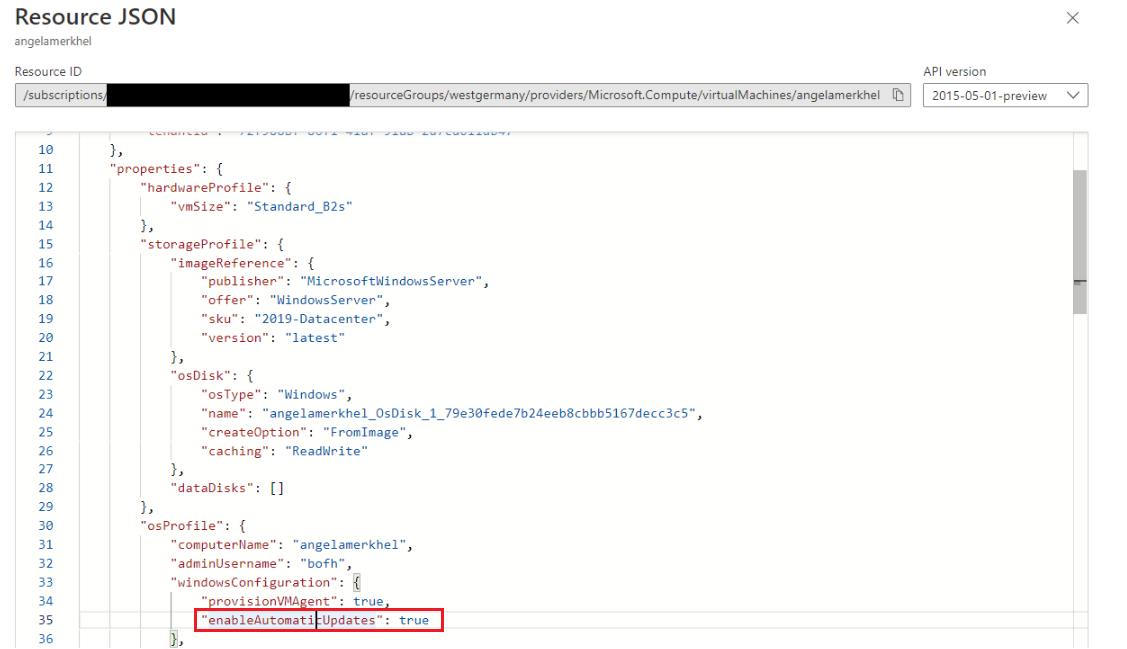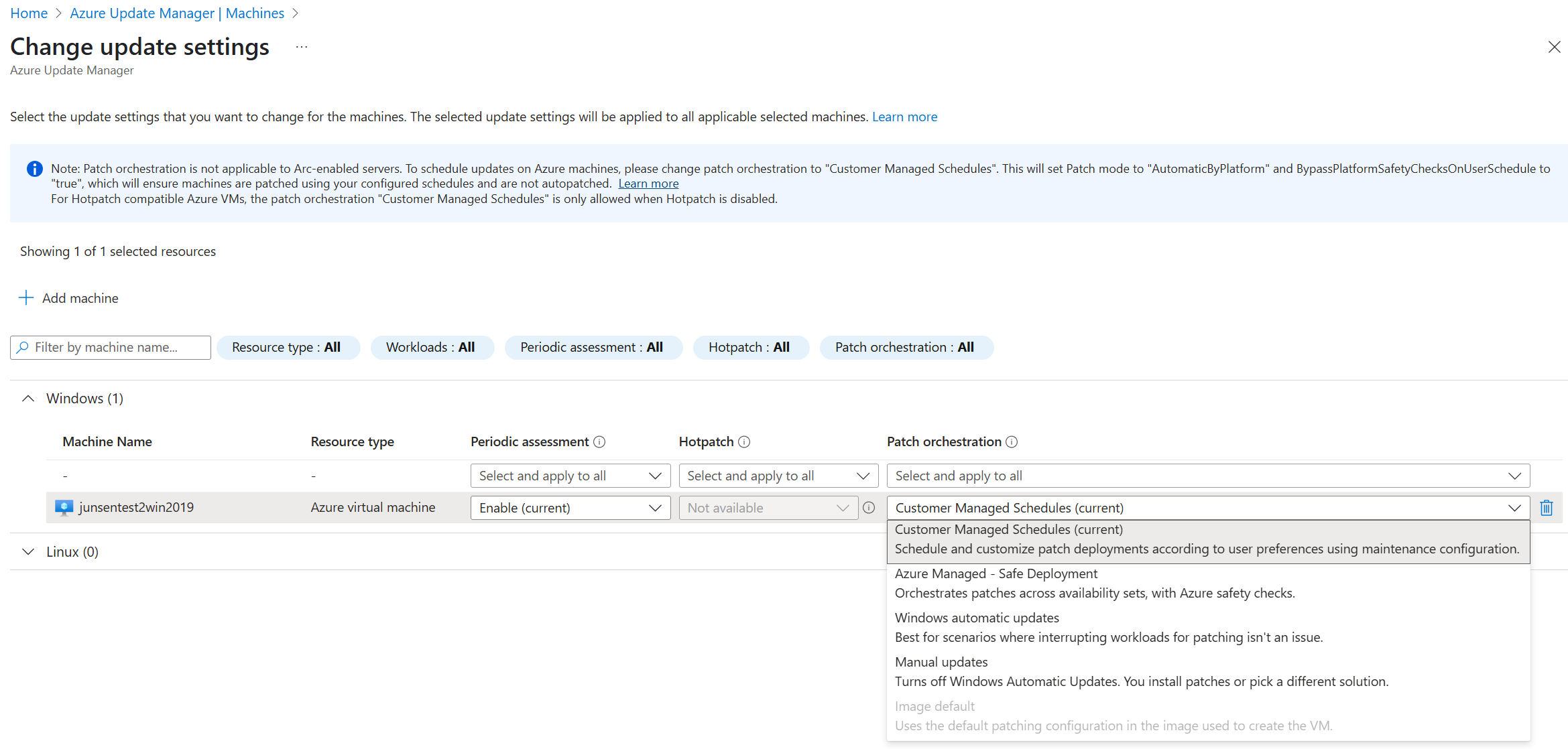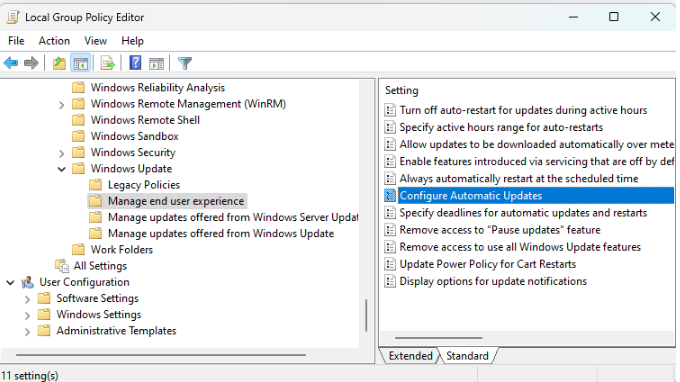Keeping your Windows Servers patched and secure is critical, and when you use Azure Update Manager (AUM) to orchestrate patching, it actually talks to the Windows Update Client on each Windows Machine via API calls, no matter it is a Azure VM or Azure Arc Server. Under the hood, the Windows Update Client obeys a special registry flag called NoAutoUpdate, and that flag can be flipped by multiple “masters of ceremony” (ARM properties, patch extensions, Group Policy) - sometimes even in conflict! In this post, we’ll:
- Explain the NoAutoUpdate registry key
- Show you how Azure VM creation will affect this registry key
- Show you how AUM controls it
- Walk through how an altervative control via Group Policy
Windows Update Client Settings at a Glance
All core Windows Update Client settings live under:
| |
The one we care about is:
• NoAutoUpdate (DWORD = 0 or 1)
- 0 = Automatic download/install according to your other AU settings
- 1 = Fully disable auto-assessment, download, and install (manual only)
Who (or What) Can Change NoAutoUpdate?
Azure VM ARM Property
osProfile.windowsConfiguration.enableAutomaticUpdates- If you select “Manual updates”, ARM writes the properties as
falseand result inNoAutoUpdate = 1on the OS. - If you select “Automatic by OS” or “Azure-orchestrated”, ARM writes the properties as
trueand result inNoAutoUpdate = 0on the OS.
- If you select “Manual updates”, ARM writes the properties as
Note: This is a one-time, deployment-time action. You must redeploy to change it.


Azure Update Manager
- When you choose Customer-Managed or Azure-Managed (Safe Deployment) patch schedules, the AUM extension (Microsoft.CPlat.Core.WindowsPatchExtension) runs on each “Assess” or “Patch” operation. The expected NoAutoUpdate value is 1 in these modes.
- During each run, it checks the registry and resets the NoAutoUpdate flag if it doesn’t match your requested patch mode.

Group Policy (Local or Domain)
- Path:
1 2 3 4 5Computer Configuration → Administrative Templates → Windows Components → Windows Update → Manage end user experience - Configure Automatic Updates = Disabled → sets
NoAutoUpdate = 1 - Enabled → sets
NoAutoUpdate = 0 - Not Configured → leaves it alone
- GP refreshes at every boot and every ~90–120 minutes, so it can “fight” Azure’s extension.

- Path:
AUM ←→ NoAutoUpdate: The Dance in Action
When you trigger a patch assessment or deployment via AUMv2:
- AUM triggers a COM API call into the Windows Update Client.
- The Microsoft.CPlat.Core.WindowsPatchExtension (part of AUM) inspects
HKLM\SOFTWARE\Policies\Microsoft\Windows\WindowsUpdate\AU\NoAutoUpdate. - If the flag doesn’t match your RequestedPatchMode (e.g.,
AutomaticByPlatform), it writes the desired value. - If it already matches, you’ll see a “No change applied” message.
Sample WindowsUpdateExtension.log Snippet
| |
With the Customer-Managed schedule, you’ll typically see the extension ensuring NoAutoUpdate=1. If your Group Policy disagrees—say, GP is set to Enabled—you’ll see:
| |
…and this can repeat every GP refresh cycle or extension run.
Best Practices & Troubleshooting
- Always decide whether you want Azure or Group Policy to be the “source of truth.”
- If you favor Azure, scope your GPO so it does not cover these VMs (or use Not Configured).
- To trace issues, search
WindowsUpdateExtension.logforNoAutoUpdate. - Remember: the ARM property is static after deployment, but the patch extension and GPO are dynamic.
Conclusion
Understanding how AUM, the WindowsPatchExtension, and Group Policy interact over the NoAutoUpdate flag is key to a stable, predictable patching workflow. With Azure’s extension constantly enforcing your chosen patch mode and GP capable of flipping the flag on its own schedule, it pays to align both systems or disable the one you don’t intend to use. Armed with these details and log-level insights, you’ll keep your Windows Servers up-to-date without the unwanted tug-of-war.
